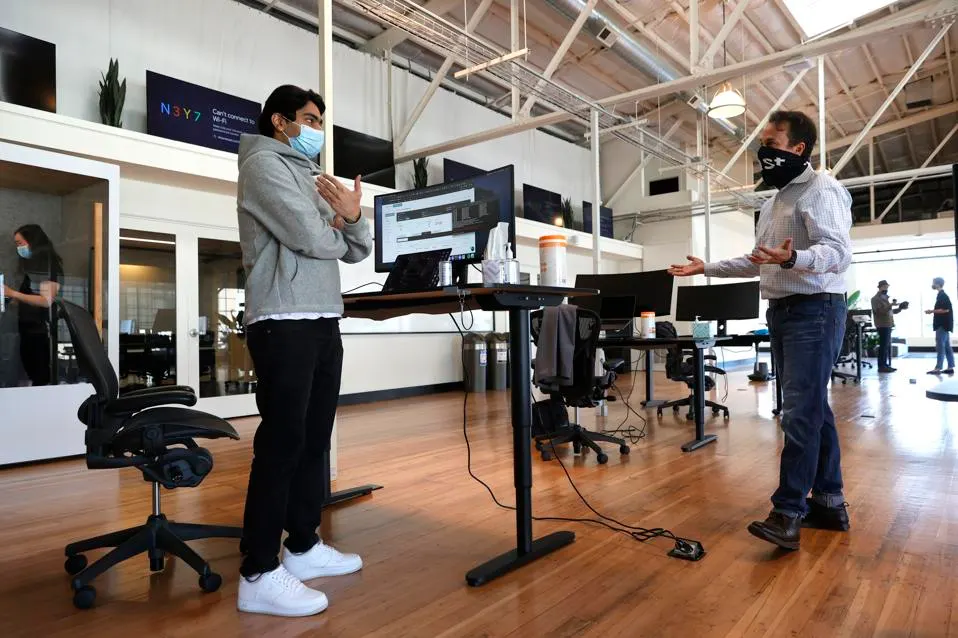As businesses in New York City navigate the evolving landscape of work, many are adopting a hybrid model that combines remote and in-office work. This flexible approach can boost productivity and employee satisfaction, but it also presents unique challenges. Successfully managing a hybrid workforce requires thoughtful planning, clear communication, and effective use of resources, including janitorial services in NYC to maintain a clean and safe office environment. This guide provides tips for NYC companies to optimize their hybrid work model.
Understanding the Hybrid Work Model
A hybrid work model allows employees to split their time between working remotely and working in the office. This model offers several benefits, including:
- Increased Flexibility: Employees can choose where they work best, whether it’s at home or in the office.
- Improved Work-Life Balance: Flexibility helps employees balance personal and professional responsibilities.
- Enhanced Productivity: With the right tools and environment, employees can be more productive.
However, to reap these benefits, companies must address the challenges that come with managing a hybrid workforce.
Setting Clear Expectations
Clear communication is key to a successful hybrid work model. Here’s how to set and maintain expectations:
- Define Work Schedules: Establish clear guidelines on which days employees are expected to be in the office and which days they can work remotely. Flexibility is important, but so is consistency.
- Set Performance Metrics: Use objective performance metrics to evaluate employee productivity. Focus on results rather than the number of hours worked.
- Regular Check-Ins: Schedule regular check-ins with remote employees to ensure they are on track and to address any issues they may be facing.
Leveraging Technology
Technology is the backbone of a hybrid work model. Here are some tools and strategies to enhance communication and collaboration:
- Collaboration Platforms: Utilize platforms like Slack, Microsoft Teams, or Zoom to facilitate communication and collaboration among remote and in-office employees.
- Project Management Tools: Implement project management tools such as Asana, Trello, or Monday.com to keep track of tasks and deadlines.
- Secure IT Infrastructure: Ensure that remote employees have access to secure VPNs and IT support to protect company data and maintain productivity.
Maintaining Office Hygiene
A clean and safe office environment is essential for the health and well-being of employees who work on-site. Janitorial services in NYC play a crucial role in maintaining office hygiene, especially in a hybrid work model where the office is not always fully occupied.
- Regular Cleaning Schedules: Work with a janitorial service to establish regular cleaning schedules that align with in-office workdays. This ensures that the office remains clean and sanitized.
- High-Touch Areas: Pay special attention to high-touch areas such as door handles, elevator buttons, and shared equipment. Regular disinfection of these areas helps prevent the spread of germs.
- Air Quality: Ensure good ventilation and air quality in the office. Consider using air purifiers and maintaining HVAC systems to create a healthy work environment.
Fostering Team Collaboration
Building a cohesive team culture is more challenging in a hybrid model, but it’s not impossible. Here’s how to foster collaboration:
- Team Building Activities: Organize regular team-building activities, both virtual and in-person, to strengthen team bonds and improve morale.
- Inclusive Meetings: Schedule meetings that include both remote and in-office employees. Use video conferencing tools to ensure everyone can participate equally.
- Shared Goals: Encourage collaboration by setting shared goals and objectives that require input and effort from both remote and in-office team members.
Supporting Employee Well-Being
Employee well-being should be a top priority in a hybrid work model. Consider the following strategies to support your team:
- Mental Health Resources: Provide access to mental health resources, such as counseling services and stress management programs.
- Work-Life Balance: Promote a healthy work-life balance by encouraging employees to take breaks and set boundaries between work and personal time.
- Physical Health: Encourage physical activity by offering wellness programs or gym memberships. A healthy body contributes to a healthy mind and better productivity.
Adapting to Change
The hybrid work model is still evolving, and companies must be flexible and willing to adapt. Regularly assess the effectiveness of your hybrid work policies and be open to making changes based on employee feedback and business needs.
- Feedback Loops: Create feedback loops where employees can share their experiences and suggestions for improvement.
- Continuous Improvement: Continuously evaluate and improve your hybrid work strategies to ensure they meet the changing needs of your business and employees.
- Stay Informed: Keep abreast of new trends and best practices in hybrid work to stay competitive and provide the best possible work environment for your team.
Conclusion
Balancing remote and in-office work in a hybrid model offers numerous benefits but requires careful planning and execution. By setting clear expectations, leveraging technology, maintaining a clean office environment with the help of janitorial services in NYC, fostering team collaboration, and supporting employee well-being, NYC companies can create a productive and satisfying work environment for all employees. Embracing flexibility and adaptability will ensure your hybrid work model is successful and sustainable in the long run.





